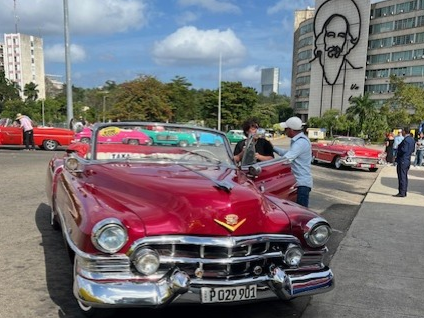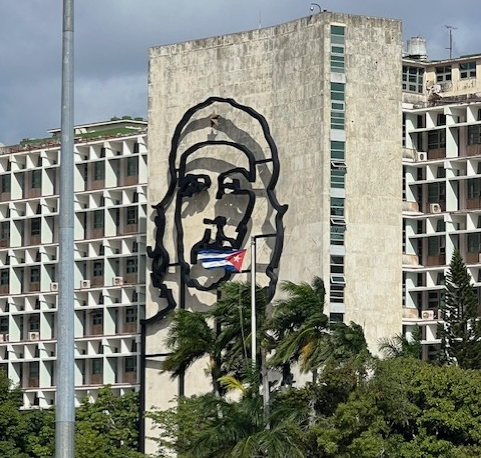Authors:
Historic Era: Era 10: Contemporary United States (1968 to the present)
Historic Theme:
Subject:
Fall 2024 | Volume 69, Issue 4


Authors:
Historic Era: Era 10: Contemporary United States (1968 to the present)
Historic Theme:
Subject:
Fall 2024 | Volume 69, Issue 4
Editor's Note: All photographs by the author unless otherwise credited.

“But what about Castro?” someone asked. “Didn’t he lead a double life, with secret mistresses, luxurious yacht, private island, multiple mansions, private security teams, secret cash accounts …?”
“Who told you that?” Jorge shot back. “Nonsense. Propaganda. What I know is this: Fidel stood for the common man!”
We’d been in Cuba just a few days, now riding a bus from Havana south across sleepy rural plains toward the old Spanish towns of Cienfuegos and Trinidad. Jorge, our Cuban guide (not his real name), was telling us about the towns, the old cars, the beat-up highway, the history, how to navigate the rest stops. (No seats on the toilets. Don’t flush the paper. You’ll clog the pipes.) Jorge, in his late 40s, had never been outside Cuba, but he spoke perfect English with no accent and was deeply conversant with global politics, finance, and life. Jorge’s wife was a university professor who drank too much coffee; his married son, a musician and teacher, had moved with his wife to the United Arab Emirates, traveling because he wanted to experience life abroad.
Growing up, Jorge had served in the Cuban military when draft age. He’d gotten a master’s degree and taught high school English before becoming a licensed tour guide, but he never joined the Communist Party. He didn’t oppose its ideology. His father had become a Communist as a government civil servant, but Jorge, even though he worked for the Cuban Tourism Ministry, saw no need.
Most young people don’t join the Party any more, Jorge told us. Nostalgia for the glory days of the revolution had grown stale over decades of hard times.
The famous revolutionary heroes of 1959 – Fidel, Che Guevara, Camilo Cienfuegos – still had their images posted everyplace in Cuba, on billboards, posters, book covers, tee shirts, you name it. Their faces stretched six stories high on the buildings surrounding Havana’s Revolutionary Square. But they were from long ago.
Jorge, talking with us during our long walks through Havana and on bus rides, didn’t hesitate to criticize his modern government. He explained the reasons why so many young Cubans wanted to leave: the bad economy, poverty, little opportunity. He explained the problems he saw with socialist economics. When asked why a compromise with the United States was so elusive, he faulted not only the reactionary American Cuban exiles in Miami – a favorite local villain - but also his own government, still reluctant to risk losing power through free and fair elections.